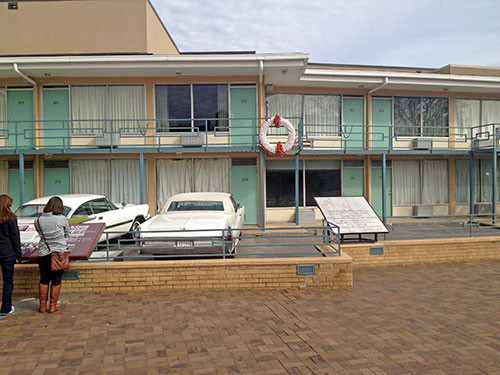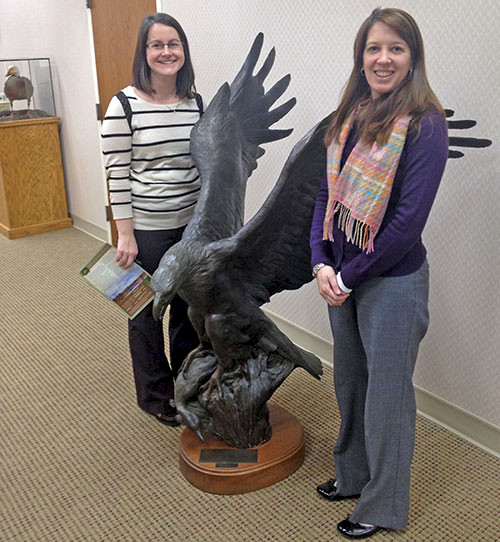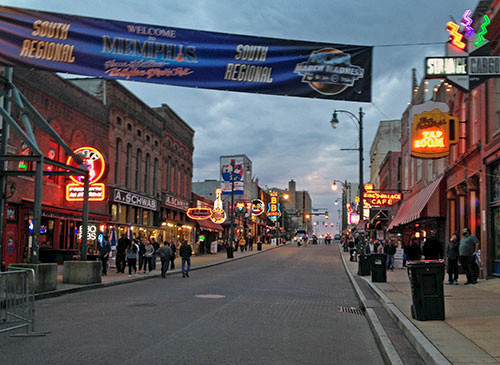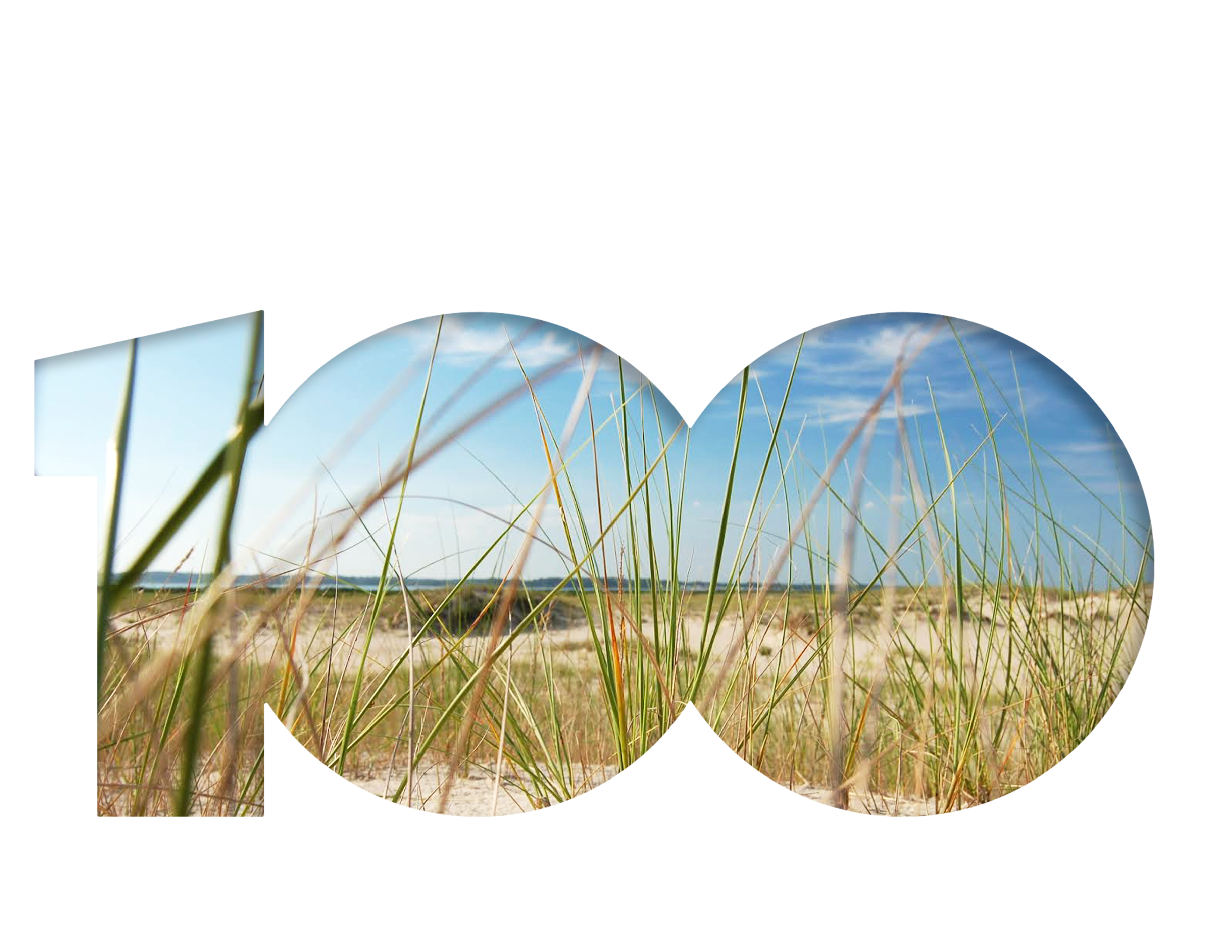Developing a Mississippi River report card: Lower Mississippi workshop in Memphis
Bill Dennison ·Once again, a contingent from IAN (Heath Kelsey, Bill Nuttle, Caroline Wicks, Brianne Walsh and me) gathered along the banks of the mighty Mississippi River to meet with a diverse stakeholder group to discuss the issues associated with the Mississippi River. In this case, we learned about the issues associated with the lower Mississippi River, which were surprisingly different from the issues in the Upper Mississippi River and the Ohio and Tennessee Rivers from our previous workshops.

Since this was the first time we had a chance to visit Memphis, we chose to leave early enough on our travel day to have a half day to tour around Memphis. Memphis is named after the ancient Egyptian city on the banks of another great river, the Nile. The United States Memphis was founded in 1819 on a high bluff adjacent to the Mississippi River, near the confluence of the Wolf River. Memphis is one of the first flood-free landing spots north of Baton Rouge, Louisiana. It is now the largest city on the Mississippi River, with over 1.3 million people in the metropolitan area. Memphis is the home base of FedEx and many other businesses. It is also renowned for the blues music scene.
We visited Elvis Presley's house, Graceland, and saw his automobile collection. I think people were curious as to why we were more excited to see his John Deere tractor on display than his famous pink Cadillac. But it was quite fitting to see the tractor since we had visited the John Deere museum in Moline, IL on our first Mississippi River workshop. We also visited the National Civil Rights Museum, which included the Lorraine Motel where Dr. Martin Luther King, Jr. was assassinated in 1969. We had visited the National Underground Railroad Museum at the Cincinnati workshop, and, fittingly, the Civil Rights museum picked up where the Underground Railroad museum left off.

We also visited a nice riverside park and watched the barges struggle upstream and race by going downstream. The large levees and wide flood plain were clearly visible, and we even drove across one of the bridges over to Arkansas to better view the river. We also visited Beale Street, the cultural heart of Memphis where blues and barbecue reigned supreme. We enjoyed good food with live blues music and saw people streaming into the basketball arena to watch the Memphis Grizzlies play a home game. There were signs welcoming four of the Sweet Sixteen NCAA men's basketball teams coming later in the week, including the University of Dayton (my home town), so I felt particularly welcome in Memphis. Unfortunately, Mud Island had not yet opened for the summer season, so we missed out on the tram and the Mississippi River model.
We held the workshop at the national headquarters of Ducks Unlimited in a suburb to the east of downtown Memphis. Ducks Unlimited is a conservation group of duck hunters created in 1937, focused on preserving habitat through the sale of duck stamps and various other philanthropy programs. It was an excellent workshop venue in a beautiful facility. Memphis is a fitting location for Ducks Unlimited in the middle of the Mississippi flyway. We were given a tour of the facility and were suitably impressed with the various collections of duck decoys, duck stamps, medallions, artwork and shotguns around the facility.

At the workshop, we learned about how the lower Mississippi River works: the meanders with dikes and levees, the busy barge traffic, the giant catfish and sturgeon, the various tributaries that feed directly into the lower Mississippi, the alluvial sediments, floods and droughts, the Louisiana coastal delta, wetlands and distributaries. It quickly became apparent that there are some fundamental differences between the lower Mississippi River from the various other Mississippi River basins (Red, Arkansas/White, Missouri, Upper Mississippi, Ohio/Tennessee Rivers).
Some key differences discussed include the following: 1) the lower Mississippi basin does not have locks and dams for navigation or flood control, 2) the river forms state boundaries (except in southern Louisiana) and divisions in federal jurisdictions, which contribute to the paucity of mainstream river monitoring, 3) extensive modification of the flood plain has occurred, forming dikes and levees which serve to channelize the river to reduce the need for dredging, 4) the coastal section of the river, which extends up to Baton Rouge, LA, is maintained for oceanic shipping, 5) the alluvial sediments deposited when the Gulf of Mexico extended much further north (to present day Memphis) affects groundwater recharge, nutrient and toxicant binding and the erodibility of soils.

I increased my environmental vocabulary by learning about "batture", which is the area of the floodplain between the 100 year levees which is not in the main channel. This area includes important habitat like bottomland hardwoods (e.g., cypress trees) and wetlands, secondary channels and islands that move and migrate following spring floods. The importance of connectivity between the main channel and various secondary channels was stressed, and there are various restoration projects (e.g., notched dikes) designed to reconnect the main channel with various secondary channels.
We added a component to this workshop compared to previous workshops, which was a short video interview with a dozen volunteers to get them to talk about the Mississippi River. We plan to edit these video testimonials into a series of personal narratives about the river. Overall, I found this workshop to be informative, the people engaging and the southern hospitality delightful. I enjoyed the southern accents, reveled in the great food and was glad to have this opportunity to learn about the lower Mississippi River in such a nice venue.
About the author
Bill Dennison

Dr. Bill Dennison is a Professor of Marine Science and Vice President for Science Application at the University of Maryland Center for Environmental Science.
Next Post > Atlantic Estuarine Research Society conference in Ocean City, Maryland
Comments
-
club pengin walkthrough 9 years ago
As I website possessor I think the articles here is really good, appreciate it for your efforts.

